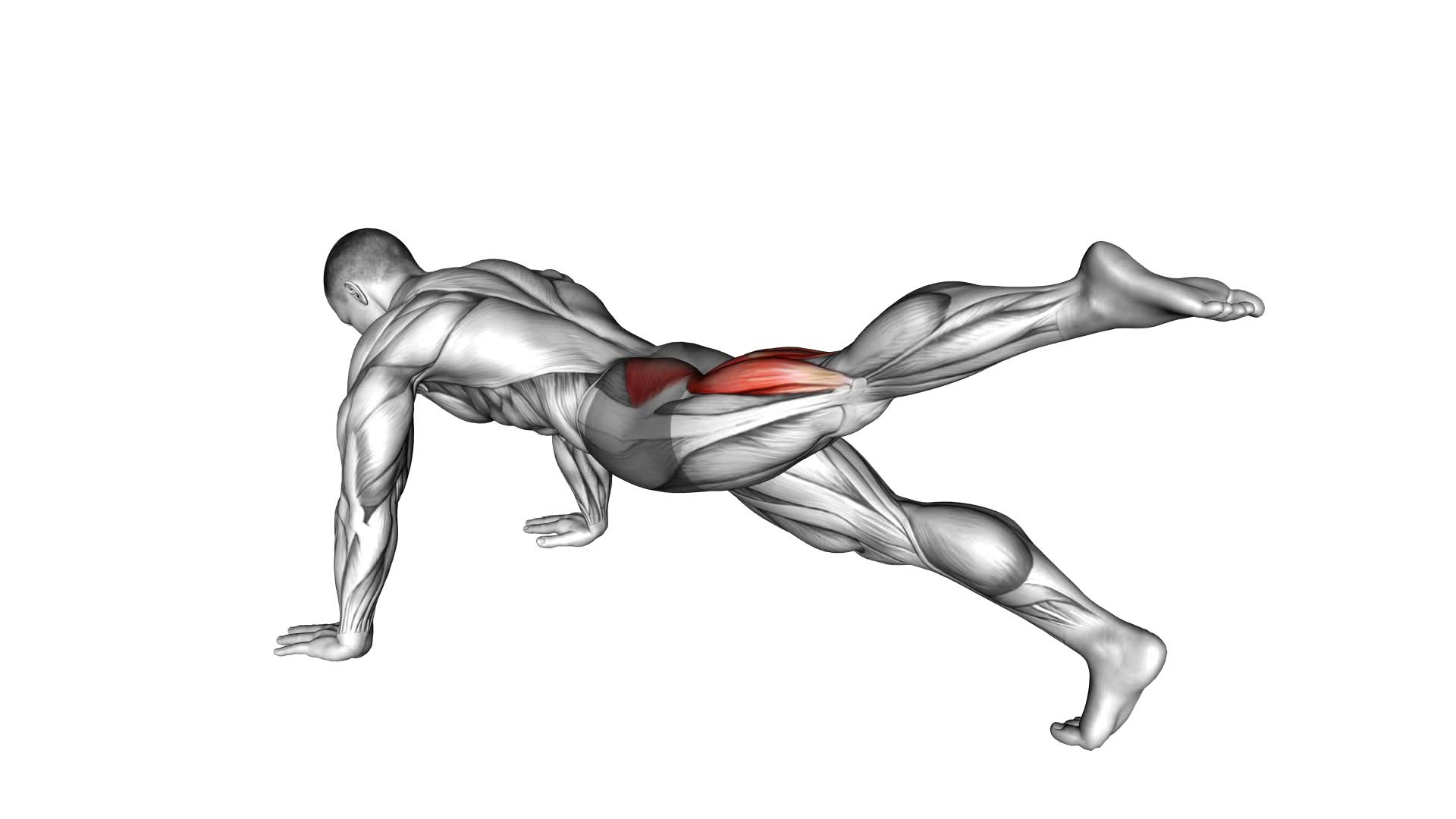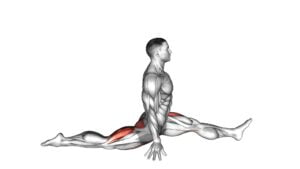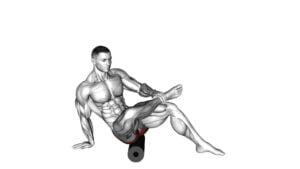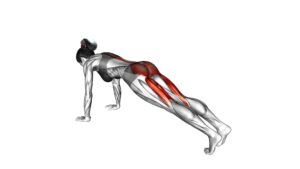Hip Extension Stretch (male) – Video Exercise Guide & Tips

Get ready to stretch and strengthen your hips with this male-focused hip extension stretch.
Watch This Exercise Video
In this video exercise guide, you'll find step-by-step instructions and helpful tips to ensure proper form and technique.
Discover variations and modifications to suit your fitness level, and learn how to achieve a deeper stretch for maximum benefits.
Incorporate the hip extension stretch into your fitness routine and unlock a more flexible and mobile lower body.
Let's get started!
Key Takeaways
- Hip extension stretching maintains flexibility and improves posture.
- It helps prevent injuries and increases range of motion in the hips.
- Hip extension stretching enhances athletic performance.
- Variations and modifications of the stretch can be used to challenge and improve flexibility and strength.
Benefits of Hip Extension Stretching
To experience the benefits of hip extension stretching, incorporate this exercise into your routine regularly. Hip extension stretching is important for maintaining flexibility, improving posture, and preventing injuries. By stretching the hip extensor muscles, such as the glutes and hamstrings, you can increase the range of motion in your hips, which can enhance your athletic performance and daily activities.
One of the key benefits of hip extension stretching is improved flexibility. As you age, your muscles naturally become tighter, leading to decreased range of motion. Regularly stretching your hip extensors can counteract this tightness and help you maintain or even increase your flexibility.
In addition to flexibility, hip extension stretching also plays a crucial role in improving posture. Tight hip extensors can contribute to poor posture, leading to issues such as lower back pain and rounded shoulders. By stretching these muscles, you can release tension and promote proper alignment of the spine, resulting in improved posture.
Proper form and technique are essential for maximizing the benefits of hip extension stretching. Transitioning into the subsequent section, we'll discuss the correct form and technique to ensure you're performing this exercise effectively.
Proper Form and Technique
To perform the hip extension stretch with proper form and technique, begin by lying on your stomach. Place your hands flat on the floor, palms down, and position them near your shoulders. Keep your feet together and your toes pointed towards the ground. Engage your core muscles by pulling your belly button towards your spine.
Next, slowly lift your upper body off the ground by pushing through your hands. Keep your pelvis in contact with the floor and avoid arching your lower back. As you lift, focus on extending your hips and feeling a stretch in your hip flexors.
It is important to maintain proper form throughout the exercise to avoid common mistakes. One common mistake is lifting the chest too high, which can lead to excessive arching of the lower back and strain on the lumbar spine. Another mistake is forgetting to engage the core muscles, which can result in a lack of stability and potential injury.
Hip extension is an essential movement for everyday activities and sports performance. It helps improve posture, mobility, and overall movement efficiency. By stretching the hip flexors and strengthening the glutes, you can enhance your athletic performance and prevent injuries.
Remember to perform the hip extension stretch with proper form and technique to maximize its benefits and minimize the risk of injury.
Variations and Modifications
You can modify and vary the hip extension stretch to target different muscle groups and increase the intensity of the exercise. By making progressive modifications, you can challenge your body in new ways and prevent plateaus in your fitness routine.
One simple modification is to perform the stretch on an unstable surface, such as a stability ball. This will engage your core muscles even more, as they work to stabilize your body during the exercise.
Another option is to add resistance by using ankle weights or resistance bands. This will increase the load on your glutes and hamstrings, making the exercise more challenging.
To further advance the hip extension stretch, you can try performing it with a single leg. This will require more balance and stability, and will also help to correct any strength imbalances between your left and right sides.
Remember to always listen to your body and progress at a pace that feels comfortable for you. With these advanced variations, you can continue to challenge yourself and improve your hip extension flexibility and strength.
Tips for Achieving a Deeper Stretch
Are you wondering how to achieve a deeper stretch during the hip extension exercise? Improving flexibility in this exercise can help you maximize the benefits and prevent injury. Here are some tips to help you achieve a deeper stretch:
- Warm up: Before starting the hip extension stretch, it's important to warm up your muscles. This will increase blood flow and prepare your body for stretching.
- Engage your core: Activating your core muscles will help stabilize your pelvis and allow for a deeper stretch. By engaging your core, you can focus the stretch on the targeted muscles.
- Relax your muscles: It's important to relax the muscles you're stretching. Tension in other muscle groups can limit the effectiveness of the stretch. Take deep breaths and consciously release any tension.
- Gradually increase the stretch: Avoid pushing yourself too hard too quickly. Start with a comfortable stretch and gradually increase the intensity over time. This will allow your muscles to adapt and improve flexibility safely.
- Avoid common mistakes: Common mistakes during the hip extension stretch include arching your lower back, rounding your shoulders, and not maintaining proper alignment. Pay attention to your form and make adjustments as needed.
Incorporating Hip Extension Stretch Into Your Fitness Routine
One way to incorporate the hip extension stretch into your fitness routine is by including it as part of your lower body strength training exercises. This stretch not only helps to improve flexibility and range of motion in the hips, but it also plays a crucial role in injury prevention and muscle activation.
When performing lower body strength exercises such as squats or deadlifts, tight hip flexors can limit your range of motion and potentially lead to injury. By incorporating the hip extension stretch before your workout, you can effectively loosen up those hip flexors and ensure proper movement throughout your training session.
To incorporate the hip extension stretch into your routine, start by standing upright with your feet shoulder-width apart. Take a step back with your left leg, keeping it straight. Slowly lean forward, hinging at the hips, until you feel a stretch in the front of your left hip. Hold this position for 30 seconds and then switch sides.
Frequently Asked Questions
Can Hip Extension Stretching Help Improve My Running Performance?
Hip extension stretching can definitely improve your running performance. By increasing flexibility in the hip muscles, this stretch allows for a greater range of motion, resulting in longer strides and improved efficiency.
Additionally, it helps to prevent injuries by reducing muscle imbalances and tightness that can lead to strains or pulls.
Incorporating hip extension stretches into your routine can have a positive impact on your overall running performance and help keep you injury-free.
Is It Safe to Perform Hip Extension Stretching if I Have a History of Lower Back Pain?
Yes, it's safe to perform hip extension stretching even if you have a history of lower back pain. However, it's important to modify the exercise to avoid aggravating your condition.
Instead of traditional hip extension stretches, you can try alternatives like bridges or quadruped hip extensions. These exercises can help strengthen your hip muscles without putting too much strain on your lower back.
Remember to consult with a healthcare professional for personalized guidance.
How Often Should I Incorporate Hip Extension Stretching Into My Fitness Routine?
Incorporating hip extension stretching into your fitness routine is crucial for improving hip flexibility, especially if you're into weightlifting. It helps to increase your range of motion, allowing you to perform exercises with proper form and reduce the risk of injury.
As for how often you should do it, aim for at least 2-3 times a week. However, listen to your body and adjust accordingly. Don't forget to consult a fitness professional or trainer for personalized recommendations.
Are There Any Specific Warm-Up Exercises I Should Do Before Performing Hip Extension Stretching?
Before performing hip extension stretching, it's essential to do specific warm-up exercises to prepare your body. These exercises help increase blood flow, loosen the muscles, and reduce the risk of injury.
Additionally, warming up properly ensures that your body is ready for the hip extension stretch. Remember, proper form is crucial during this exercise to target the right muscles and prevent strain.
Can Hip Extension Stretching Help Alleviate Hip Tightness Caused by Sitting for Long Periods of Time?
Hip extension stretching is an effective way to alleviate hip tightness caused by sitting for long periods.
By incorporating hip extension exercises into your routine, you can improve flexibility and reduce discomfort.
This type of stretching targets the hip muscles and helps to increase range of motion.
Regularly performing hip extension stretching can provide numerous benefits, including relieving tension, improving posture, and enhancing overall mobility.
Consider adding these exercises to your fitness regimen for optimal results.
Conclusion
Incorporating hip extension stretches into your fitness routine can provide numerous benefits, including improved flexibility, increased range of motion, and reduced risk of injury.
By maintaining proper form and technique, you can ensure maximum effectiveness of the stretch.
Additionally, experimenting with variations and modifications can help target different muscles and enhance the stretch.
Remember to listen to your body and gradually increase the intensity of the stretch over time.
Start incorporating hip extension stretches into your routine and experience the positive impact on your overall fitness.

Author
Years ago, the spark of my life’s passion ignited in my mind the moment I stepped into the local gym for the first time. The inaugural bead of perspiration, the initial endeavor, the very first surge of endorphins, and a sense of pride that washed over me post-workout marked the beginning of my deep-seated interest in strength sports, fitness, and sports nutrition. This very curiosity blossomed rapidly into a profound fascination, propelling me to earn a Master’s degree in Physical Education from the Academy of Physical Education in Krakow, followed by a Sports Manager diploma from the Jagiellonian University. My journey of growth led me to gain more specialized qualifications, such as being a certified personal trainer with a focus on sports dietetics, a lifeguard, and an instructor for wellness and corrective gymnastics. Theoretical knowledge paired seamlessly with practical experience, reinforcing my belief that the transformation of individuals under my guidance was also a reflection of my personal growth. This belief holds true even today. Each day, I strive to push the boundaries and explore new realms. These realms gently elevate me to greater heights. The unique combination of passion for my field and the continuous quest for growth fuels my drive to break new ground.







